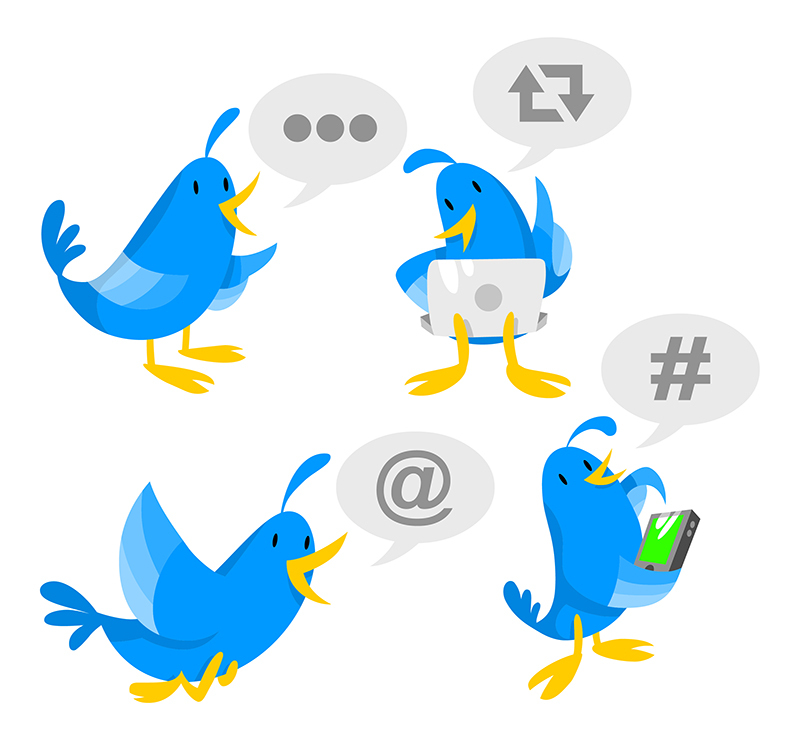
When Alexandra Witze, reporting for Nature, attended the meeting of the American Geophysical Union in December 2014, she needed a strategy.
The meeting covers topics in all areas of Earth and space sciences and usually attracts more than 22,000 attendees, making it the largest Earth and space science meeting in the world. Although Witze had scoped out a few interesting sessions and papers ahead of time, she could only be in one place among many concurrent sessions competing for her attention. But thanks to the Twitter hashtag #AGU2014, she was able to follow what was happening in multiple conference rooms at the same time. She even noticed a tweet that tipped her off to an interesting talk in a different room, to which she promptly went.
“Twitter is really useful for simultaneous monitoring of events in real time,” says Witze (who is also on TON’s Board of Directors). At another meeting, the Lunar and Planetary Science Conference in Houston in March 2015, she went to a session about the MAVEN mission to Mars. She used real-time Twitter feeds to get a sense of what the scientists in the room thought was important, and wrote up this story while the speakers were still talking. The real-time feedback she got from Twitter was “like having a small army of smart people helping out,” Witze says. And following the live tweets provides “a whole other level of commentary” that can be valuable for identifying sources to interview for a story.
Tapping the “Collective Brain”
Twitter’s usefulness as a reporting tool doesn’t end with scientific meetings. Following up with experts who tweet interesting commentary about scientific advances or debates is also a great way to identify and connect with potential sources. Developing those relationships over time, as opportunities arise, makes it much more likely for a source to respond to you when you’re on deadline.
Witze notes that Twitter is also valuable for reporting on natural disasters and emergencies because it offers a way to obtain primary information from people who are on the scene, more quickly than the news media feeds. Eyewitness reports, access to photos, and commentary from scientists and experts who can put the events into context all make Twitter’s “collective brain” useful, she says.
In August 2014, the Bardarbunga volcano in Iceland started showing signs of possible eruption. Witze was familiar with the general context of Icelandic volcanoes, having written a book on them, but she used Twitter extensively to learn a lot, quickly, about the specifics of Bardarbunga and follow expert sources discussing the eruption. In particular, she noticed that Scottish volcanologist Dave McGarvie of the Open University (@subglacial) was tweeting important background and context about the volcano and speculating about possible eruption scenarios in the days before the eruption actually began. Witze had previously been to Iceland with McGarvie, so she knew he was a reliable source. After a few direct messages to him on Twitter to confirm and follow up on his public postings, Witze used this and other information from his Twitter feed to help inform an explainer piece for Nature.
Witze also eavesdropped on revealing public Twitter discussions among experts, including this exchange about where the lava was actually coming from and what to call the eruption. Her later stories on the eruption, informed by such discussions, included this one for Nature.
The platform can also be an important tool for understanding emerging stories. Science journalist Ed Yong, who is writing a book about the bacteria that live in the human gut and skin, has for the past several years followed researchers who study this bacterial community, called the human microbiome. Following Twitter conversation about how a field is progressing provides “a new perspective that’s totally different than reading papers or attending conferences,” Yong says. “You can plug into conversations with your sources.”
The Telltale Tweet
Sometimes even a single tweet can prompt a curious journalist to follow up, sparking further reporting. In 2012, Yong noticed a tweet in which Eric Topol, a physician-scientist at the Scripps Translational Science Institute, shared a letter he’d received from a child, thanking Topol and his colleagues for their help:
Dear Scientists,
Thank you for what you do every day. Without you, I would still be shaking every night and be exhausted during the day. Now that I’m sleeping, I no longer have to wear socks when I sleep for fear of scratching my legs with my toenails when I shake.
I look forward to being able to sleepover at my friends’ houses, instead of always having to invite them over because of my shaking.
School will be so much easier now that I’m sleeping as well. My family and I can’t thank you enough!
Love,
Lilly.
The tweet immediately sparked Yong’s interest. “Typically, I use Twitter to parse information,” he says. “It’s rare that something jumps out at me. Most of the time, it’s about understanding the conversation.” But in this case there was clearly something to follow up on.
Yong replied to Topol’s tweet to ask about the backstory, and Topol replied within minutes. The letter’s author, a 14-year-old girl, had a serious genetic disorder that caused muscle weakness, poor coordination, and balance problems, as well as tremors that prevented her from sleeping. The disorder’s cause was unknown. By sequencing her genome, Topol’s team discovered the genetic cause of Lilly’s disease—a mutation of two genes—and suggested a drug that finally allowed Lilly to sleep tremor-free.
Yong interviewed both Topol and Lilly’s parents and wrote about Lilly’s case on his blog. That might have been the end of it, but several months later, Topol contacted Yong to tell him about another patient with a genetic disorder, Kim Goodsell, who had similarly benefited from genome sequencing. After some further digging, Yong eventually published a story about Goodsell in Mosaic.
Getting Personal
Good sources don’t just have information—some of the best sources in many science, environmental, and health stories have personal experiences, unique opinions and insights, and stories to tell. You can use Twitter to find those sources—if, that is, you know the trick that New York Times staff editor Daniel Victor pointed out in a recent Medium article, “The one word reporters should add to Twitter searches that you probably haven’t considered.”
That trick? Personal pronouns. Adding the word me—or variations like my, our, and I—to topical Twitter searches can deliver people with personal stories to tell, right to your screen. (To make the most of Twitter’s search capabilities, use search operators or the Advanced Search function.)
Variations on the same theme could also be useful. If you’re looking for families with children who have a particular medical condition, you could do searches that include the medical keyword along with the phrase our son or our daughter. If you’re looking for scientists who disagree with the dominant interpretation of a much-discussed study, you could search for tweets about the subject that include terms like my take or my critique. As Victor writes at Medium, “Imagine what your perfect source would tweet, or what you yourself would tweet in that situation, and search for the words that would probably be in it.”
Twitter Lists, Favorites, and Other Tricks
The amount of information on Twitter is formidable, but there are tools to manage the onslaught. Reporters can use Twitter’s lists function to pull together feeds focused on specific topics of interest. Witze, for example, begins by identifying “node” people who tweet useful information on a given subject, and then studies whom they are following and talking to. Identifying “nodes” easily leads to other sources to follow. Watching these interactions “opens a new way of seeing and interacting with the community—especially with younger scientists,” she says.
Using the third-party application TweetDeck enables reporters to monitor multiple lists simultaneously. Lists can be either private or publicly visible to all Twitter users. Studying other users’ public lists is a good way to find new Twitter users of interest. Maintaining effective lists requires constantly curating trustworthy, authoritative sources and removing ones that are no longer useful.
Tim De Chant, editor of NOVA’s long-form journalism site NOVA Next and author of the blog Per Square Mile, also relies on lists to organize his Twitter feed according to different scientific subfields. Organizing his feed this way allows him to see interesting ideas in juxtaposition—and the combination of different ideas can lead to a story. Much of what he does, De Chant says, is “connecting dots between disparate pieces of information and figuring out how they fit into a coherent narrative.”
Saving Tweets for Later
To save and organize interesting tweets for later use, some science journalists rely on simple organizing systems. Yong and De Chant, for example, use the “favorites” function as a bookmarking tool. Others use more sophisticated systems. Maryn McKenna uses If This Then That (IFTTT) to send favorite tweets to her Evernote account, where she collects fodder for blogs and stories. (Here are some popular IFTTT “recipes” for connecting Twitter and Evernote.)

Viviane Callier is a freelance science writer and a contractor at the National Cancer Institute. She was a Churchill Scholar at Cambridge University, where she studied early tetrapod fossils, and then earned her Ph.D. in insect physiology at Duke University, where she studied body size regulation in tobacco hornworms. Follow Viviane on Twitter @vcallier.


